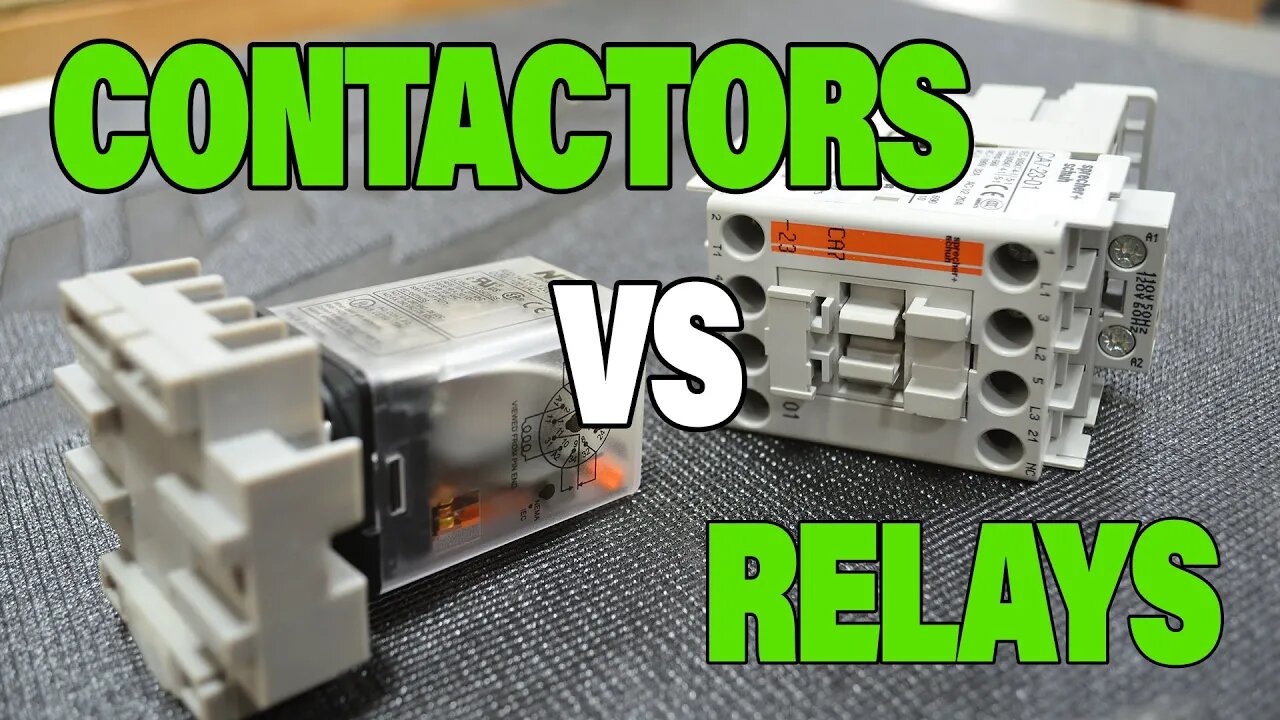Premium Only Content

The Difference Between Contactors And Relays - ELECTROMAGNETIC SWITCHES electricians use
A lot of people get really confused by contactors and relays and tend to treat them like some kind of mystical magic device without understanding what exactly they do. They have some similarities but still have very distinct differences.
00:00 Intro
00:27 How Are They Similar?
01:33 How Do They Differ?
04:22 Outro
👾🤖PRACTICE EXAMS🤖👾
https://www.electricianu.com/practice-exams
😎👕MERCH👕😎
https://www.electricianu.com/merchandise
📲👥SOCIALS👥📲
Instagram - https://www.instagram.com/electrician_u
Discord - https://discord.gg/7ykYfbh
Facebook Page - https://www.facebook.com/theelectricianu
Facebook Group - https://bit.ly/2tz7eQh
TikTok - https://www.tiktok.com/@electricianu
Contactors and relays are simply switches. They differ from a standard switch, however, by being able to be controlled with electrical current rather than your finger. Both operate with a coil on the inside that, when energized, sucks contacts closed or snaps them open. It would be as if you were able to zap a normal light switch with a bolt of lightning to get it to change states....kind of.
Both relays and contactors are also multi-pole switches. This means that they can control several circuits, rather than just one like a normal single-pole switch would do. A typical 8-pin cube relay can control 2 circuits, while an 11-pin can control 3. General-use contactors can control anywhere from 2-4 whereas lighting contactors can control from 6-12 circuits/loads. All with the flip of a single action (bump of current).
What makes them different are a few things. First off, relays are typically lower voltage applications as well as lower-current applications. Relays you may come across could have coil voltages of anywhere between 12v and 240v on average, and can control loads in the 5-15amp range. Contactors tend to be more stout and can handle higher amperage through the coils and contacts. You could see coil voltage ratings between 120v-480v, and contacts around 30-50amps on average.
CONTINUE READING FULL ARTICLE AT: https://www.electricianu.com/podcast/episode-28-the-difference-between-contactors-and-relays-electromagnetic-switches
#contactors #relays #electrical
--
Subscribe - https://www.youtube.com/c/electricianu?sub_confirmation=1
IF YOU ENJOY THESE VIDEOS PLEASE SUBSCRIBE AND "LIKE" THEM ABOVE. ALSO CHECK OUT THE ELECTRICIAN U PODCAST ON ITUNES AND SPOTIFY!!
-
 0:56
0:56
Electrician U
1 year ago90° Drill Attachment!!! - What Hand Tools Are YOU Missing
5.53K1 -
 11:57
11:57
inspirePlay
18 hours ago $6.33 earnedLongest Drive Wins! Elite Long Drivers Battle in Par 4 Elimination
43.5K5 -
 8:44
8:44
RTT: Guns & Gear
20 hours ago $3.03 earnedStreamlight TLR RM2 Laser - G | The Best PCC Light
25.7K1 -
 36:38
36:38
Athlete & Artist Show
1 month ago $2.46 earnedNCAA Hockey Was A Joke, TNT Hockey Panel Is The Best In Sports
25.7K2 -
 1:00:08
1:00:08
Trumpet Daily
23 hours ago $4.70 earnedBanning Mystery of the Ages - Trumpet Daily | Jan. 17, 2025
15.1K18 -
 15:10
15:10
Chris From The 740
1 day ago $1.57 earnedEAA Girsan Disruptor X 500-Round Review: Is It Reliable?
19.6K1 -
 1:00:38
1:00:38
PMG
17 hours ago $4.61 earnedCarnivore & Dr. Shawn Baker - Health Starts With Food
42.1K4 -
 1:28:13
1:28:13
Kim Iversen
18 hours agoCancelled Chef Pete Evans Exposes The One Change That Could End Big Food and Pharma
105K95 -
 4:20:21
4:20:21
Nerdrotic
20 hours ago $84.29 earnedDaradevil Born Again, Comics Industry CRASH, Neu-Hollywood REBUILD | Friday Night Tights #337
257K66 -
 1:32:34
1:32:34
Glenn Greenwald
16 hours agoThe Future of Gaza With Abubaker Abed; Journalist Sam Husseini On His Physical Expulsion From Blinken’s Briefing & Biden’s Gaza Legacy | System Update #391
137K104